Taijiboxing and the Art of Precision Shooting
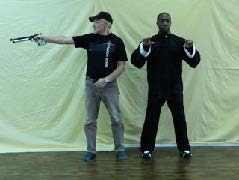
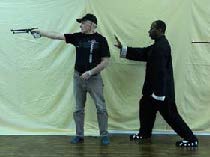

Taijiboxing is a martial art akin to Taijiquan the emphasis being on retaining the combative aspects
found within the practice of Taijiquan for self defense as well as enhancing longevity.
My name is Dennis Pounall and I have been Plying Taijiboxing for about 15 years and practicing martial arts about 30 yrs now. I am 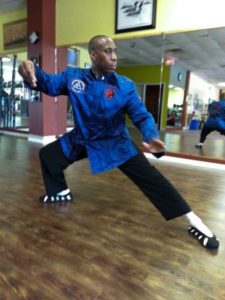 writing this article to share a experience I came across last year and wanted other Taiji players to be aware of TAIJIQUAN MULTIFACETED range of appeal. Mr. John Rochon is a world class internationally recognized precision competitive sport shooter( now retired) . He came to my center in Elliot Lake (VitFitKlub) and said he was interested in learning a bit about “Tai Chi” for relaxation. I stated that I practice TaijiQuan which is very similar to Tai Chi for health and relaxation except we have tried to retain most of the self defense applications and the Qi kung internal harmony along with the art. This making it both a self guided discipline as well as a martial art. He was immediately intrigued and decided to give it a try. The next week he came into class I had advised him to wear loose clothing and flat…We began with standing meditation
writing this article to share a experience I came across last year and wanted other Taiji players to be aware of TAIJIQUAN MULTIFACETED range of appeal. Mr. John Rochon is a world class internationally recognized precision competitive sport shooter( now retired) . He came to my center in Elliot Lake (VitFitKlub) and said he was interested in learning a bit about “Tai Chi” for relaxation. I stated that I practice TaijiQuan which is very similar to Tai Chi for health and relaxation except we have tried to retain most of the self defense applications and the Qi kung internal harmony along with the art. This making it both a self guided discipline as well as a martial art. He was immediately intrigued and decided to give it a try. The next week he came into class I had advised him to wear loose clothing and flat…We began with standing meditation
“Embrace the One” and I described the concept of “stillness and motion”,
within the paradigm of whole body breathing and mindful meditation. Afterwards, we did some standard Taiji warm up exercises and started on the first 5 moves for the yang style classical form:
commencement; turn; ward-off; right; and the grasp bird’s tail sequence. I demonstrated the
form, breaking the moves down, explaining both the energetic concepts as well as possible self
defence applications.
Therefore, the practioner need only focus on the form and function!
The Sight Picture Meditation in action
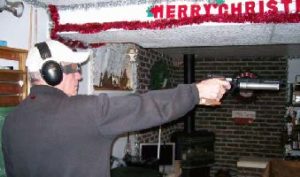
I always emphasize “no absolutes” in taijiboxing. Each movement must be naturally
spontaneous and flexible for proper applications and fluid energetic flow.
Following this, John came to class and asked me a few questions: “Why in standing meditation, do we stand with
our feet, toe-in?” I responded, “For stability. It’s why I focus so much on the breathing and motion.”
Following this, John came to class and asked me a few questions: “Why in standing meditation, do we stand
with our feet, toe-in?”
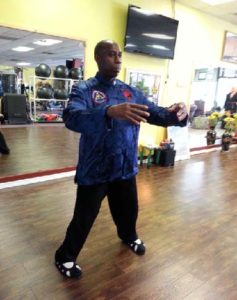
I responded, “For stability. It’s why I focus so much on the breathing and motion
.” “Perfect practice makes perfect.
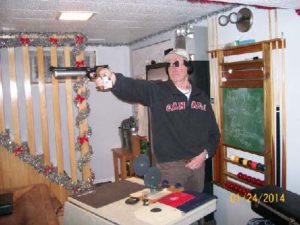
“Then he asked me why do we move so slow? I responded,
“We practice slow to move fast.”
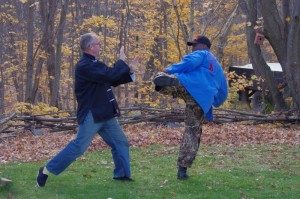
Finally, he asked if you are relaxed, how can you move fast..
if you are not ready? I said,
“This is the purpose of “Stillness and Motion’.”
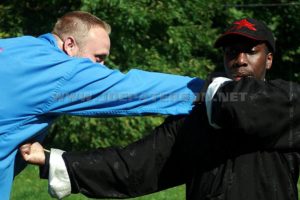
He pondered that for a while and said, “I wish I had studied Taiji when I was competitively shooting. It would have made all
the difference.”
Here is where the discussion began, we spoke of the similarities and differences between competitive Taiji Quan demonstrations and competitive precision shooting and found more similarities than differences…
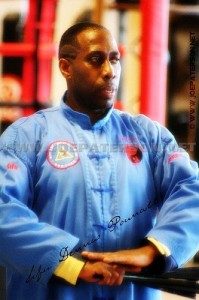
![]()
“Inception of the Maio Dao saber form..”
Read more… Sifu Pounall’s saber forms
” A young taijiboxerTaiji Boxer in the making. sifu dennis pounall Kitchener kicks”
Song of the Thirteen Postures( Shi San Shi Xing Gong Ge Jue)
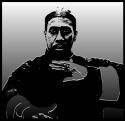
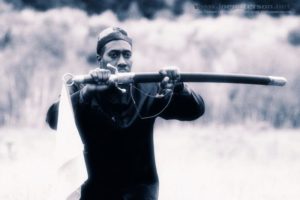
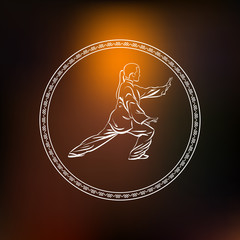
The “Song of the Thirteen Postures” is one of the Taijiquan (Tai Chi) Classics.
The term “Thirteen Postures” usually refers to the classic fundamental movements of Taijiquan. However in this anonymously written essay the focus is more on the basic theoretical principles of mobilizing the Qi (vital life energy) through the interplay of mind, Qi and body.
The following entry including its annotations has been adapted by the editor, John Voigt, from various translations and commentaries listed in Sources below.
1-a. The Thirteen Postures should not be neglected.
The reader is being admonished not to disregard this serious and profound martial art and to
actually practice it.[editor’s comment].
1-b. Their source is in the region of the waist (yao).
“The waist is the mainstay of all the T’ai Chi movements…The four limbs rely on it to revolve and the whole body depends upon it for support.”
[T. T. Liang 46].
2-a/b. When alternating back and forth from emptiness [yin] and solidness [yang] be mindful and mentally focused (yi), taking care that the Qi is flowing freely, without any sluggishness, throughout the body.
A basic method to understand and successfully practice Taijiquan is to continuously alternate back and forth from yin (empty -“insubstantial”) and yang (solid -“substantial.”) As an example, if attacked on the left side, withdraw your body and shift your weight to the rear foot, now further neutralize the attack by turning to the left. The left is now insubstantial [yin]; you counterattack with your right hand which becomes substantial [yang].
[Liang 43]. Qi here functions as the fuel that grants the body and mind their power, clarity, and force.
YouTube videos: Master Yuan Xiu Gang. Wudang Taiji 13 Postures
13 Forms of TaiChi: [youtube video] 13 Posture Front Demonstration:[ youtube video]
Top: English. Bottom: Pinyin. The Thirteen Postures (8 Gates and 5 Steps) are referred to in various ways by Taijiquan
authors. Some call them the Thirteen Powers, others call them the Thirteen Postures, the Thirteen Entrances, the
Thirteen Movements, or the Thirteen Energies. They are often associated with the eight basic triagrams from the YiJing
(I-Ching)and the 5 elementary processes (Wuxing).
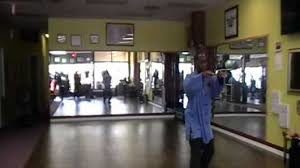
3-a. In stillness action stirs; in action there is stillness.
“When applying Tai Chi Chuan in combat, you must be calm yet alert: your form is still, but
your chi (Qi) is moving inside you. When you move, your movement is very swift, but your
mind is still.”[Wong Kiew Kit 31].
3-b.[In this manner you are] Adapting to the opponent’s moves and conditions will seem
mysterious and full of wonder.
4-a. Deliberately consider the intention and purpose of each movement.
4-b. Then it will be possible to obtain effortless skill (gongfu).
5-a. Always keep the mind (xin) centered at the waist (yao).
5-b. With the abdomen calmly relaxed, the Qi [stored there] can rise (the Chinese word for
rise, “teng” also can mean: to soar, gallop, prance, or move out) without hindrance.
6-a. Keep the tailbone (coccyx) centrally aligned and straight so the spirit of vitality (shen)
penetrates up to the crown of the head.
6-b. Then, with the head feeling as if suspended from above, the entire body will be light and agile.
7-a. Carefully and attentively study the techniques deep into their roots.
7-b. Then bending-stretching, opening-closing, will be done with a freely spontaneous skill.
In Taijiquan, the body bends inward then stretches outward. There is a calming rhythm of
growing and shrinking, opening and closing throughout a Tai chi practice.
[beginnerstaichi.com]
8-a. When beginning the training a teacher is required to lead the way.
8-b. Accomplishment comes through one’s unceasing labor and personalized study.
“This stanza is the most detailed statement in the whole of the [Taijiquan] Classics about the act of studying. It speaks of the beginning of study, the relationship to the teacher, and the discipline of Taijiquan itself. Achievement, however, cannot happen without your own
hard work. Paradoxically, you cannot think about it too much, or you will not have the necessary spontaneity and naturalness.
Theory and practice cannot be divorced from one another. You need both the feedback and experience that a teacher offers. However, the
teacher cannot do the work for you; you must apply yourself diligently, over a long period of time.” [Barbara Davis 147].
9-a. When speaking of form and method of application [of Taijiquan movements] what should rule as the standard?
9-b. The mind (yi)joined with Qi (vital life energy) rule; the body (flesh, blood and bones) serve.
“When looking at the correctness of movement the criteria is, are the mind and Chi [Qi]
directing the movement. All the movements are done with Jin [energetic power] supported
by the Chi and directed by the Yi (mind). If the movements [only] are done with the bones
and muscles, this is your Li (strength) [brute muscular force] and is considered incorrect.”[Dennis Watts].
10-a. What is the final purpose [of the practice]?
10-b. To extend life, bestowing [upon the practitioner] an ageless joyful springtime of youth.
11-a. A song to sing; ah! a song to sing.
11-b. One hundred forty word/characters [given above], each word is true and clear; its meaning is complete.
12-a/b. If one does not carefully study these words and practice their meaning, then in vain
they have wasted their efforts(gongfu). Theirs will be sighs and gasps of regret.
Chinese Words Defined in the Context of Taijiquan:
Yao- 腰. Simply translated as “waist” but can also refer to the lower torso, or the pelvic
region including hips, loins, and lower spine. Also the body’s center of gravity, and the dantian“.
Yi- 意 – (sounds like “ee”). Mental intention; a state of silent mindfulness of the will.
Xin- 心 (sounds like “shin(g)”). Heart and mind: the merging of emotion, desire, goals, wishes, attitude and aspirations.
Gongfu –功夫. (kung fu) Skill; art; labor; effort. Qi (or chi), 氣 (sounds like “chee”).
The vital energy, or breath, that grants us life.
*Editor’s comments on the translation: The original text is problematical. For example, its title and opening words are literally “Thirteen Postures” which could be referring to the thirteen basic classic movements of Taijiquan; or instead be referring to the earlier name of
Taijiquan itself—or to both! Not only that, the word “postures” [shi in the original] is misleading because the idea is not static “postures” or “positions” but rather fluid Taijiquan
“movements.” Admittedly “Thirteen” does mean thirteen, but what exactly these moves (or
positions) are, and exactly how are they to be executed, is hotly debated within the Taijiquan
community; along with most teachers suggesting fewer or more than thirteen basic
movements. And it becomes even more confusing because the anonymous author of the text
wasn’t that concerned about martial arts outer postures or movements, but rather
concerned with using the inter-connected internal aspects of the mind-body-breath energy
nexus to gain a long and healthy life. And added to all this confusion is the last word of the
title “ge”–literally meaning “song”–is not really accurate because the text is written as a
poem, and not as a “song.”
Even in the original, the Chinese is cryptic to the point of a confusing ambiguity. The text
seems like quickly jotted down notes—brief aphorisms for a reader who already is well
versed with the material. Something like a Cliffs Notes study guide monograph for college
professors to refer to when teaching a class.
It is impossible to render a translation into English that grants a full transference of all the
meanings of the original. (Even in Chinese many of the phrases are open to various
interpretations.) It is inevitable that any translator will interpret the original text through the
filters of his or her own way of thinking, and create a personalized document. In my goal of
producing a clear, honest and easy to understand version of the text, I used eleven different
translations all listed in the Sources—some such as T.T. Liang’s and Barbara Davis’s, had
outstanding commentaries from which I borrowed and cited. I also used various internet
translating sites, such as chinese.yabla.com which offered various possibilities for each
word. I must now confess, as the editor of Qi Encyclopedia, my own bias: which is an
intellectual and experiential exploration of Qi—(a word that probably is impossible to
perfectly define in any language). I tried, therefore, to emphasize Qi’s presence and function
in the “Thirteen Postures Song.”
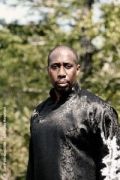
End notes: [1]^ “Song” as used in the title is actually a poem used to facilitate
memorization. To maintain the rhyme it was made up twelve pairs of seven character
sentences; this is reflected here by the numbering added by the editor. “Postures” here is
about the inner-movements of Qi within the body related to the outer-movements of the four
limbs, more than any concern with just static positions. The title in Traditional Chinese is 十
三勢歌. In Simplified Chinese it is 十三势 歌歌 . In pinyin it is Shisan shi ge, literally meaning the
“Thirteen Postures Song.”
[2]^ More information on the “Thirteen Postures” can be found at absolutetaichi.co.uk
Sources:
Paul Brennan. Song Six (Known as the Thirteen Dynamics Song).
Cheng Man-Ch’ing, and Robert Smith. “Song of the Thirteen Postures,”pp. 111-112 inT’ai Chi:
The “Supreme Ultimate” for Health, Sport, and Self-Defense. Tuttle, 1967.
Sifu Michael Chow. Shi San Shi Xing Gong Ge Jue (Song of Secrets for Training in the 13
Techniques), [sourced from Grand master Wong Kiew Kit]. Wongkiewkit.com/forum. [contains
text of Thirteen Songs in Chinese and English.]
Barbara Davis. The Taijiquan Classics: An Annotated Translation. North Atlantic Books, 2004.
Waysun Liao. T’ai Chi Classics. Shambhala, 2001. [also reprinted as The Essence of T’ai Chi.
Shambhala, 1995.] Master T.T. Liang. T’ai Chi Ch’uan: For Health and Self-Defense. Knopf
Doubleday, 2011.
Louis Swaim and Fu Zhongwen. Mastering Yang Style Taijiquan. Blue Snake Books, 2006.
Wong Kiew Kit. The Complete Book of Tai Chi Chuan. Tuttle, 2002
songs of the thirteen powers 2018
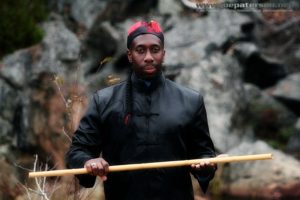 .
.
hope you enjoyed this article.. peace
Mindful Movement a Therapeutic Taijiquan Program 2019-20
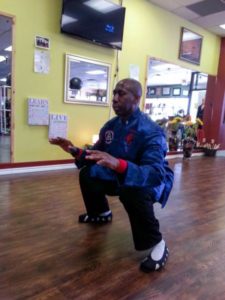
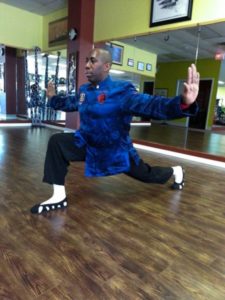
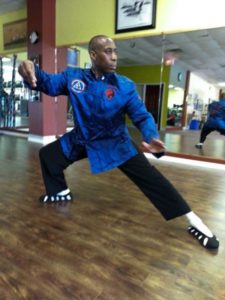
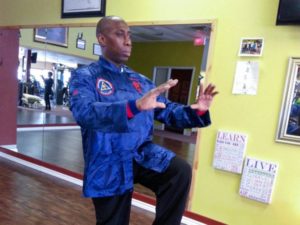
by sifu Dennis Pounall
Tai Ch i is one of the ancient Chinese martial arts developed for self-defense, disease prevention, and stress reduction through meditation and movement. The true original name of the system is:
TAIJIQUAN : TAI meaning (Tao path or way, or method) Chi (Qi- Vital force or innate subtle energy,
and Quan meaning (Fist) “or self directed method of self control. Tai Chi is practiced for its many health benefits and is one of our numerous wellness Mind Body Programs we offer to help keep our members healthier, happier and more active in there daily lives.
What makes Therapeutic Taiji different from Recreational Taiji practice?
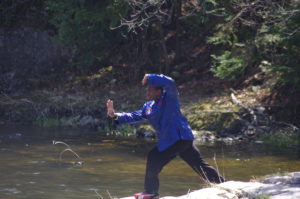
This program is delivered over 8 weeks with a focus on calming the mind, coordinating the breathing ,
improving body awareness, increasing Balance,and Joint Mobility, Enhance Postural awareness.
Develop better memory mapping. muscular endurance and cardio respiratory efficiency..
The focus is not on learning the “form/ set”or sequence(But more on how, and why the movement is
essentials. AND HOW DO YOU connect with yourself and your body. and what is proper
coordinated “BREATHING” and WHY IT feels good. and the joy of active movement.
Here is a overview of the Introductory Program
• Week One : Introduction to fundamentals of TaijiQuan
• Week Two :Warm up exercises and balance skills
• week Three : Meditation fundementals and breath work
• week Four: Structure and movement skills flexibility work
• week Five: Refeining movement skills, Breathing and movement
• week Six :refining movement skills coordination and alignment
• week Seven :Memory feeling and flow and awareness
• week Eight: stability in motion relaxation and coordination.
This is a exercise program so expect to sweat and expect to work
AND EXPECT TO FEEL GOOD..
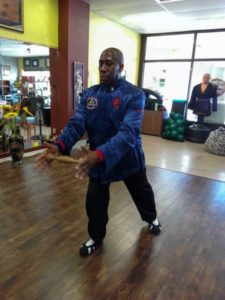
The end result produced by Tai Chi is a mental and physical calmness generated in a completely
natural way. Tai Chi also helps keep emotions more in balance, reducing the need to succumb to unhealthy coping techniques such as addiction. The ability to handle stress improves, as does the sense of feeling more centered and grounded to handle life’s challenges.
Conclusion: Taiji Quan is a self directed system for Rejuvenation, Relaxation,and ReEnergisation,
PROGRAM that can benefit people of various levels of health and fitness interest.
The environment recommended is one of tranquility and harmony this is designed to promote well
being peace and clarity of individual purpose as well as fun and social well being.

Instructor: Sifu Dennis Pounall C.T.I.
Come by and join us, take a class and share the peace!!!
Mindful Movement a Therapeutic Taijiquan Program 2019-20
Equilibrium means:
A condition in which all acting influences are canceled by others, resulting in a stable, balanced or unchanging system.
Mental and emotional balance; poise.
Physics : The state of a body or physical system at rest or in unaccelerated motion in which the resultant of all forces acting on it is zero and the sum of all torques about any axis is zero.
Chemistry : The state of a chemical reaction in which its forward and reverse reactions occur at equal rates, so that the concentration of the reactants and product remain stable.
Equilibrium is a concept that embodies some of the highest attributes of a effective martial arts discipline. It is uniquely embedded in the intricacies of Taijiboxing as it demonstrates the essence of the art form.
In many forms of Taijiquan they often refer to the theory of Yin and Yang, without any concrete example of it in the real world. There is often many references to conceptualized application for both, self defense and energy work or Qui kung training. I believe both are one in the same in the fact that both the idea of softness overcoming hardness can not fully be experience with out real life application.
 With this new skill of equilibrium it is possible to be one step closer to the appreciation of simplicity of the supreme ultimate fist theory for health longevity and effective self defense. This can be utilized in the form as a discipline for life and an artful expression in daily Taijiquan practice. In the practice of Tui shui, most people learn push hands in the traditional way and start very gently with one hand, and eventually both. With time, patience and diligent practice, few venture into the competitive area of push hand competitions.
With this new skill of equilibrium it is possible to be one step closer to the appreciation of simplicity of the supreme ultimate fist theory for health longevity and effective self defense. This can be utilized in the form as a discipline for life and an artful expression in daily Taijiquan practice. In the practice of Tui shui, most people learn push hands in the traditional way and start very gently with one hand, and eventually both. With time, patience and diligent practice, few venture into the competitive area of push hand competitions.
 But what does this really teach us?
But what does this really teach us?
Most of the players are usually players with some martial arts background, are competitive and don’t mind a bit of contact. The more seasoned the player, the better off they tend to perform.
So, what are they really better at?
I believe that push hands is a skill that is a integral part of Taijiboxing art, a successful addition to practice self defense. When and only if practiced in the correct context, true benefits yield. If push hands is practiced in arena of fixed rules and stipulations, then it is not realistic. As in the natural environment, there are no fixed rules or stipulations. The real world is dynamic and variable just as the practice of push hands should be.
The interpretation of the classic always maintained this: the idea of soft overcoming hard, slow defeating fast, parables adopted by students, observing the masters. Over time, some of these popular statements became included as part of the chronicles of Taijiquan. The reality is if you move fast, I move faster. This claim has little to do with speed alone, but on perception and preemptive movement. This is where the soft skills of listening adhere, stick, follow lead and attack are most useful, through a developed sense of natural equilibrium. These principles were always developed through experience and real time application. Full force full speed, sometimes discomfort, pain or even injury.
Henceforth, the age old adage ‘invest in loss’ doesn’t necessarily mean that Taijiboxing or any martial arts should be become a Macho art with Gladiatorial writes of passage.
 Realistic approach to training embodies personal protection, prevention of injury and enlightenment for a better quality of life.
Realistic approach to training embodies personal protection, prevention of injury and enlightenment for a better quality of life.
This is what might’ve meant by the title of the Supreme ultimate fist and may have nothing to do with the idea of being the best as the only method designed to achieve longevity.
Maybe the practice of Taiji quan is one of the better ways to stave off disease and live in harmony with oneself, and the environment.
We must try to achieve a state of natural equilibrium that allows us to move with ease, thus balancing our emotions, attitudes and belief systems.
We should know when to be to be strong, when to be hard (if necessary) for self preservation. Soft but supple, compassionate, reasonable, intuitive . . .
The natural way for equilibrium to work is also known as harmony.
This may well have been what the ancients called enlightenment – the ability to utilize the theory of yin and yang
in everyday life . Through the practice of moving meditation the taijiform and the application of principles for
self development, preservation and protection. Equilibrium is the essence of stillness and motion and motion
in stillness, these traits embody the essential tenants of Taijiboxing and Taijiquan for a fuller, more vital lifestyle.
I hope you’ve enjoyed this article and look forward to sharing and discovering of new wisdom from the
ancient teachers.
Dennis Pounall lives and works as a flight paramedic in Northern Ontario Elliot Lake, competes (inter)nationally
in Chinese Martial arts weapons and of course Taijiquan demonstrations and competitions. His wife of twenty years, Jana, is a yoga instructor and a novelist.
For more interesting articles check out www.taijiboxer.com. for videos www.youtube.com@dpounall.
E-mail to taijiboxer@bell.net
Thursday, June 30th, 2011

The metamorphosis of a Taiji player to a Taiji boxer is a subtle but enlightening shift in both perspective and potential. It could be assimilated as the pupae and the butterfly; all the essential ingredients are consolidated within. However, only with clear intention and mindful attention, will this subtle change occur.
This transition requires patience, persistence, acceptance of pain and perseverance of the disciple, a road less traveled by the majority of Taiji players. Most Taiji players practice the form (the form or set of 108 movements) with little attention to its martial roots or its philosophical heritage. It requires adept tutelage, natural ability and, above all, patience, in order for the miraculous conception to take place. This is the mystery of the metamorphosis from Taiji player to Taijiboxer.
If we examine ourselves daily with mindful meditations and mental alertness, checking our thoughts, motivations, and their external manifestations in our behavior, it may be possible to occasionally catch a glimpse of the secret change in process. Looking too hard will most certainly evade your awareness. There lies the beauty of the Taiji symbol and the wisdom of the ages.
 If you spend your life and energy to focus only on the inward journey, (the Taiji sequence or set) it is like staring at your fingers pointing to the moon. Do not concentrate only on your fingers. Then you will miss all the heavenly glory of the Taiji boxer’s journey. Form without function is a functionless form. The movement without the meaning is mindless movement. Therefore, the Taiji form without the boxing is incomplete, like a bicycle without gears. You never reap the maximum benefit of the bicycle with all its innate potential. With diligent practice you will grow to understand that stillness is the foundation, and action is the use. Action then becomes the fulfillment of stillness, known as the spirit of vitality. Such blending of stillness and motion is a foundational part of the change related to the Taoist principles of yin and yang.
If you spend your life and energy to focus only on the inward journey, (the Taiji sequence or set) it is like staring at your fingers pointing to the moon. Do not concentrate only on your fingers. Then you will miss all the heavenly glory of the Taiji boxer’s journey. Form without function is a functionless form. The movement without the meaning is mindless movement. Therefore, the Taiji form without the boxing is incomplete, like a bicycle without gears. You never reap the maximum benefit of the bicycle with all its innate potential. With diligent practice you will grow to understand that stillness is the foundation, and action is the use. Action then becomes the fulfillment of stillness, known as the spirit of vitality. Such blending of stillness and motion is a foundational part of the change related to the Taoist principles of yin and yang.
Another part of the subtle change is the rule of the hard becoming soft and the secret of cotton and steel. It is an important transition that all Taiji boxers understand softness overcoming hardness.
Hard things become brittle, and brittle things break. Too soft can be too weak, therefore I believe “Be soft and sensitive on the outside and strong and supple on the inside” just like cotton over steel. The practice of silk reeling and bone marrow washing and tendon changing skills helps this part of the transformation.
 The integration of the thirteen powers, as well as practice and applications of the push hands theory, helps to solidify the “quiet skills”{ Chi Na ,Shuai Jiao, Fa Jin, Kicking skill, and striking techniques}.
The integration of the thirteen powers, as well as practice and applications of the push hands theory, helps to solidify the “quiet skills”{ Chi Na ,Shuai Jiao, Fa Jin, Kicking skill, and striking techniques}.
The Taiji boxer’s martial skills round out and solidify with the addition of weapons’ training and Qui Kung techniques.
With this basic formula combined with a minimum of 15 years of dedication and diligent practice, the disciple will be on his way to the completion of their metamorphosis.
In the stillness and motion of our daily lives, the Tao of being enhanced with martial discipline and clarity of the Buddhist mind is essential to living a compassionate and vital life.
These treasures, discovered by the ancient Taoist sages, are as relevant now as they’ve ever been. All we need to do is apply them. This may be the reason for Taijiquan to be known as the supreme ultimate fist.
Thank you for taking the time to read my article. I believe that partaking and sharing our knowledge is the way to achieve our own individual vault of immortality.
Sifu Dennis Pounall
Archive for the ‘ Evolution of a Taijiboxer.. ’ Category
Taijiboxer’s Adaptive Responsive Flow Technique
Taijiboxer’s Adaptive Responsive Flow Technique
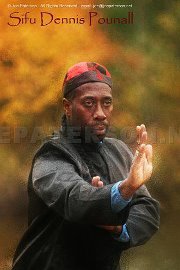
Sifu Dennis Pounall ‘On Guard”
Taijiboxing is a progressive martial art and a comprehensive exercise discipline it combines principles fro both eastern and western approaches to health and vitality.
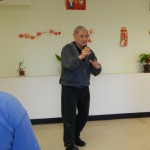
Master Ho Lo demonstrates”right foot Seven Star Stance”
Recently I went on a visit to Toronto to celebrate my half a century birthday, with some friends and visit with my old sifu Master Ho Lo Lam. It was nice to visit the city see the hustle and bustle hear are the different languages and be expose to a wide variety of authentic ethnic culinary and cultural delights. I first visited my good friend by Instructor Ian Zachemski Gibbs a classical yet eclectic Hapkido Instructor, we shared some stories caught up with each others life’s and then decided to do some training.
This was great fun, as we get to compare similarities between combat theories, applications, and executions. I was able to absorb some principles and learn a new kick called a “Wheel Kick”. I was also able to Introduce to them the concept of “Ghost Stepping” This is a principle absorbs from the Taijjutsi discipline, and the Japanese system of “Tai Subaki”. Tai Sabaki is related to Ashi Sabaki or (Footwork) and Te Sabaki or (handwork).
The technique of Sabaki is a unique method of meeting an attack by combining defense and offense into one motion. This implies the use of harmony rather than pure physical strength or speed. The students in the class really enjoyed working with this new concept, and were happy to integrate this idea into their own bag of tricks.

My next stop was to visit with my Sifu and mentor Taiji instructor Master Ho Lo Lam. I had heard that he had recently recovered from back surgery and was well enough to star teaching TaijiQuan again. Although he was forbidden by his wife to participate in any push hand instruction, and he was to be very careful when demonstrating applications for us. I was very happy and pleased to see him again ,and he was happy to see me. The whole class welcomed me back as if I was a long lost cousin, to me this is a sign of a true martial arts practice . We all accept each other as if we are all part of one big extended family regardless of our differences..
Class began with our usual warm up and coordination exercises , and then Master Ho Lo began to demonstrated some correction to the form, and what the proper breathing rate and rhythm, should be, and the correct body alignment . He also demonstrated various interpretation for self deference applications as he always does. .
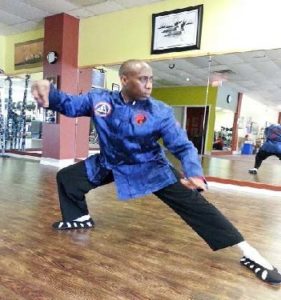
Master Ho Lo focused on the application for ” Single Whip” and “Seven Star Stance” showing numerous variations for application. It was great to see sifu still enthusiastic about the Art of Taijiquan and like always he mentioned the holistic benefits for each posture.,and the practical use for self defense. We then continued to practice the Yang traditional form, and did some push hands. Some students broke off to practice the difficult Chen style” Cannon Fist” some people drank tea and conversed, and then others practiced the “Yang style Taiji Fan form”. I was practicing push hands as I rarely have a opportunity to have anyone to practice with.
As is our tradition after class we usually go out for brunch. So off we went up to Markham China town , and went to our favorite restaurant and had a 8 beautiful course brunch. We all talked about life politics and the weather,and shared stories and then wished each other well, and of course a parting belated“Kung Hao Fat Choy!”(for the Year of the Dragon) and went our separate and merry ways. .
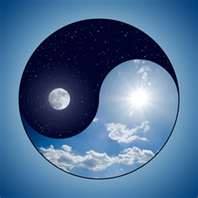
The harmony of taijiquan is natures” Elixir for defeating everyday stress”
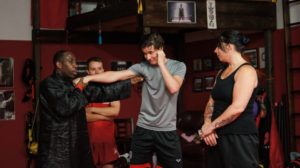
Taijiboxing applications!!
Taijiboxing the Art of Fighting without Fighting
wave hands like clouds, stillness and clarity!!
Sifu Pounall Maio Dao Play
Taijiboxing slow speed sparing silk reeling and flow.
Taijiboxing, and No Nonsense Hapkido Edge weapon free flow, slow speed.
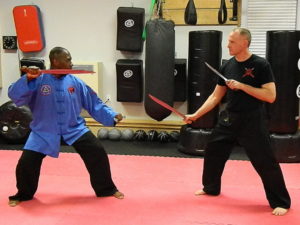
Sifu pounall Knife play
Adapt and overcome everything has it”s purpose especially a bamboo sword stick, never be completely Predictable
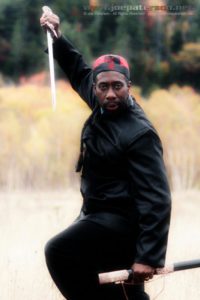
Yin and Yang of sword play
Stillness and motion,action and in action
Intercept, adhere,redirect and attack fluid motion
Pluck the root dislodge the tree, timing and range control speed, timming and agility will defang the snake
“Defend high attack low, you give me your arm I control your shoulder. ”
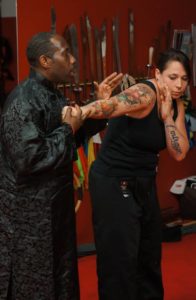
Suddenly still, suddenly in motion, form less form stability in Motion!!
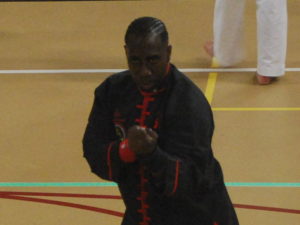
Have a Great day Peace sifu Dennis Pounall
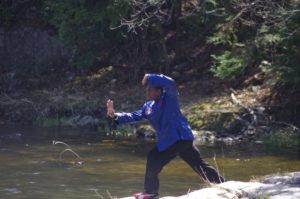
Taijiboxing the path to Health Harmony and Vitality!!
Tags: martial arts instructors. real self defense. kung fu instructors, martial arts kungfu. Knife defense, mixed martial arts, Philosophy of combat, taijiboxers self defense
Posted in Applied Taijiboxing, Evolution of a Taijiboxer.. | No Comments »
Friends of Sifu
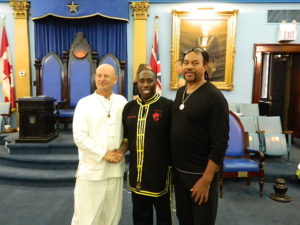
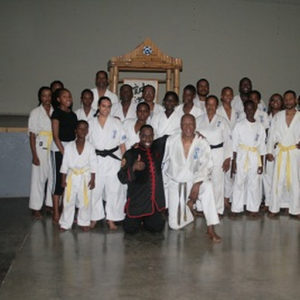
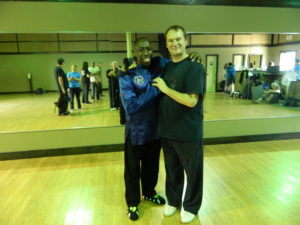
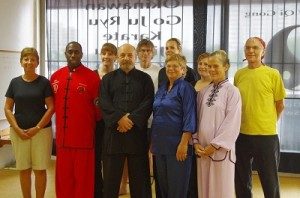

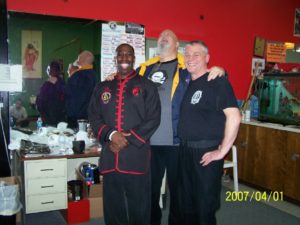
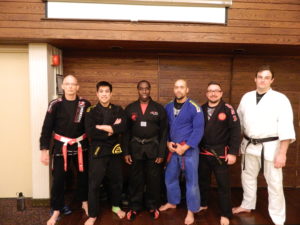
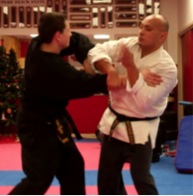
http://joepaterson.net/ : Joe Paterson Figurative artist.
http://www.kitchenerkicks.ca/ Kitchener kicks martial arts center. Sifu Dave Hacketts
http://www.3fires.ca/Ignite/Sifu Darrell Couchie
http://nononsensehapkido.com/ Nononsense hapkido martial arts.InstructorIan.Zachemski.Gibbs
http://www.wuyijiehe.com/taichiplayers.html : Master George Picard.
http://www.parkerstangsoodo.co.uk/page57.htm: MASTER Ian PARKER’S SERIAL KICKERS (MPSK)
http://p2.hostingprod.com/@seido.com/01_about_seido/worldwide_dojos.htm#Jamaica Jamaica Seido Karate: Jun Shihan Tony Robinson.
Posted in Friends of sifu Dennis Pounall | No Comments »
The Evolution of a taiji boxer
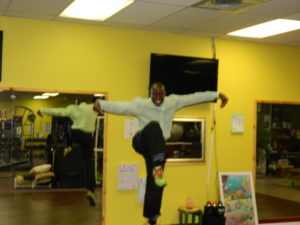
Hello my name is Dennis Pounall and I have been involved in Taijiquan for a number of years, and practicing martial arts for the last 30 years. I was introduced to martial arts by many teachers and influenced by a few. In my time of study I began to understand that martial arts is both a discipline and an Art Form. Pursuing the discipline, one should acquire a combination of proper instruction, adept understanding, and appropriate application.

These factors along with a wholesome traditional foundation separates modern from traditional martial arts. In today’s society, the most challenging aspect of the arts are the recent drawbacks of modern lifestyle and global attitudes. To most young people today, the reasons for choosing and studying a martial art are quite variable. Some may see it as a way to become famous, the next winner of the ”Ultimate Fighting Championship” commonly known as the ”King of the Octagon”.
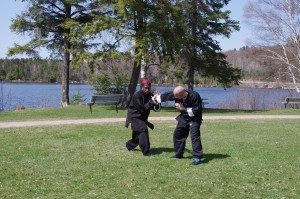
“Repulse monkey with retreating step”
Others may pursue another path where they choose the tournament circuit as their arena, and pursue recognition by winning trophies and titles…
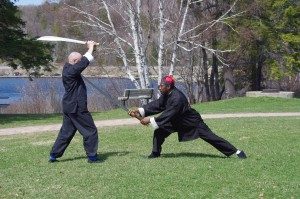
“The Maio Dao sabers pierces the heavens”
If a traditional approach is chosen, their should be some philosophy, some theology and some room for adaption and innovation. This allows both, the art and the artist to maintain its essential principles, yet develop and add to its traditional forte, Thus allowing room for continued growth by keeping it a living tradition and maintaining a vital system.
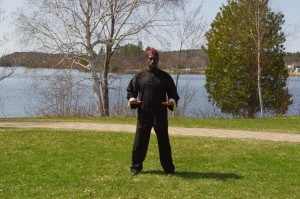
Then the art’s full expression stays dynamic, and the essential discipline and the style never gets lost. Thereafter each generation of practitioners will add a little more to the system, breathing fresh life into the martial art, making it relevant in the time and environment in which it is practiced.
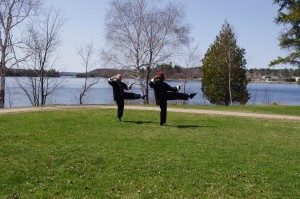
Taijiquan and Taijiboxing is heavily steeped in the artistic expression depending on which family style you practice, and archaic principles founded in a symbiotic relationship between Taoism and Buddhism.
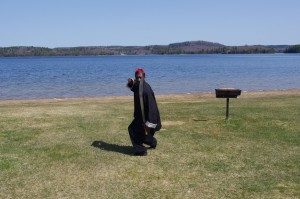
In article written by Gene ChingFrom, an interview with master Taiji Player Dr. Yang Jwing Ming (Kungfu Taiji Magazine March/April )edition (pages 33-44), he conducts an interview and asks some very poignant question.
“Separation of Right Foot”
Posted in Evolution of a Taijiboxer.. | No Comments »
Bio. taijiboxer inception is a method for vitality ,self defense , relaxation, and personal development!!
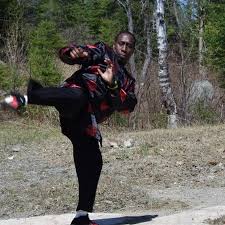
The Tao Of A Modern Taiji Boxer
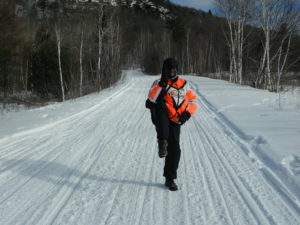
Synthesis
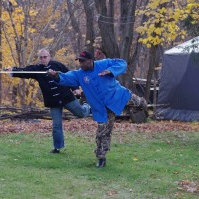
” Taijiboxing is the harmony of breath mind, intention and attention.”
(and the supreme ultimate fist of Taijiboxing)
The term synthesis is used in many fields, usually to mean a process which combines two or more pre-existing elements resulting in the formation of something new. The verb would be “to synthesize” meaning to make or form a synthesis.
Taijiboxing is both a discipline and an art form, and has multiple levels of expression and is popular worldwide. It is renowned for its many preventive disease benefits as well as it numerous natural health benefits. It can be practiced by young and old, strong and weak, in sickness and in health. Both the rich and the poor can glean the benefits from this ancient discipline.
But what sets this discipline apart from the many other forms of exercise and martial arts systems?I believe that, within the practice of Taijiquan, is the unique availability of self-guided, on-going development, allowing each practitioner the ability to continually improve, share, and grow as they age in life, in mind, in body, and in spirit.
This unique trait makes Taijiquan practice, principles and application unlimited and timeless, making it, in a sense, the supreme ultimate, as it is limited in potential only by the boundaries of each practitioner.
Consequently, it never grows old and is never in or out of style. This, unlike most martial arts disciplines, allows this system to be both universal and also international. With each new generation of taijiboxer comes the refreshing of the old wisdom becoming the new rediscovered knowledge.
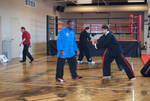
This concept of natural transmission through the spoken word, and to learn by doing is quite foreign and difficult to sell in today’s fast-paced, information age, and the modes of transmission are much more difficult to negotiate.As the world turns and our universe appears smaller, our full awareness of self also gets distorted.We focus on technology and over-consumerism.Our feelingis continuously pacified and we are disconnected, first from our true self (the concept of a higher power, God, Buddha, Jehovah, Alla, nature),then from each other, our family and our friends, then our neighbors, relatives,and work acquaintances. This creates a subdued feeling and sense of isolation, … and a society of shut inns. Everyone believes their only mandate is to foster a sense of survival, and life becomes a constant struggle to survive, and very few people actually live.

“Golden rooster stands on one leg”
The essence of Taijiboxing is found in Buddhism, which is all about “compassion and sharing”, and the fundamentals of Taoism, which promotes “self awareness, and interaction and understanding of universal cycles of cause and effect, and the collective cooperation between man and his universe to promote longevity and maintain harmony on the planet. These two concepts enhance universal, compassionate enlightenment with a sense of immortality of the spirit. These transcend the boundaries of mind and body, therefore, we no longer struggle with death, dying and diseases, which are all natural processes. But with a caring, compassionate lifestyle in harmony with your environment, you know and can choose to embrace life, and nurture the supreme, ultimate gifts found within the daily practice of Taijiquan.
Synthesis is the unseen ability to draw from your past, present, experiences and future in intuitive knowledge and observations. These concepts give you the unique ability to create an alternative solution to any given or unforeseeable conflict. This ability in some people may be innate, but, in most, is learned, and in a few individuals can be developed. The ancient Taiji master must have discovered a method of harnessing this truth and applied it to their daily life. This wisdom was applied in both physical conflicts and in everyday life experiences on the journey of life.
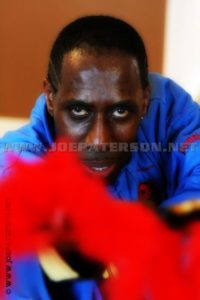
“The eagle spots it prey”
This gift was sometimes passed on to a chosen few, but, in most cases, died with the master, or was never fully transmitted. For this reason, Taijiquan is still the supreme ultimate fist, and awaits the reincarnation of the gifts of the masters for all to benefit. (It’s hidden in plain sight.) The essential aspects of synchronicity
are the applications of the five phases of Taijiboxing.
!. stillness in motion and motion in stillness.
2.Silk reeling skill and Synchronicity and economy of motion
3.Chi Na in (5 levels )
4..Fa Jin and Chi kung
- Shuai Jiao
These concepts, when integrated with meditation, healthy living, a wholesome, varied diet, and a natural zest for life, help to maintain Taijiboxing as one of the supreme ultimate gifts left by the ancient Taoist Sages..
In conclusion Taijiquan and Taijiboxing have a synergistic approach to maintain a healthy, vibrant attitude to life and living. The philosophy and discipline, found in the application of Taijiboxing principles to everyday living, helps to maintain an open and free- flowing mindset of synthesis that allows for spontaneous, flexible options to living a full, happier life.
I hope you enjoy my article. Please feel free to comment and leave your ideas and observations. Keep the information flowing..

Sifu Dennis Pounall at Tim Horton’ arena Hamilton
Posted in Evolution of a Taijiboxer.. | No Comments »



